친절하고 훌륭하신 여러분, 수프림 마스터 TV에서 ‘사랑스런 삶의 터전, 지구'입니다. 이번 주에 뉴질랜드의 웰링톤 소재 빅토리아 대학 지질학 교수이자 남극 연구소장인, 피터 바렛 박사와 인터뷰하게 되어 영광입니다. 바렛 교수는 시기에 따른 남극의 역사적 진화연구에 40년 이상을 전념했습니다. 1960년대에 바렛 교수는 미국 오하이오 주립대학에서 5년간 박사 학위를 마쳤습니다. 그는 또한 남극 대륙의 산맥지도 제작에 참여하면서 고대 역사에 매료되었습니다. 뉴질랜드에 돌아와서 남극 근처 해저의 심해지질 시추 탐사에 참여했습니다. 그는 시추로 얻은 표본이 남국대륙 과거추적의 열쇠임을 알았습니다. 현재 바렛 교수는 오랫동안 남극에서 일어난 기후 및 화학변화를 잘 이해하기 위해 남극의 얼음 시추표본을 채취합니다.
당신은 지난 30년간 몇 개의 남극 시추사업에 참여했습니다. 지구의 과거와 현재 기후를 이해하는데 이런 사업이 어떤 도움이 되나요?
극 지방은 지구에서 특히 민감한 지역입니다. 대부분 열은 열대 지방의 햇볕에서 나와 극지방까지 순환합니다. 그러나 지구의 중앙 지역보다 극지방의 변화가 더욱 큽니다. 시추 작업이란 실제로 시간을 거슬러 기후의 역사를 얻지요. 남극은 대부분이 빙하로 덮였기에 다른 대륙처럼 노출된 암석을 조사하지 못하니 시추가 중요해요.
바렛 교수는 또한 빙상에 대한 지구 온난화의 영향과 부수적인 해수면 상승을 연구합니다. 미국 항공우주국 (나사)의 선도적인 미국 기후학자 제이 즈왈리 박사는 2012년 여름까지 북극 빙하가 사라질 수 있다고 말했습니다. 피터 바렛 교수는 이런 사건의 가능한 영향을 말합니다.
아주 심각한 영향이 있을 거에요. 우선 변화가 예상보다 빨리 발생하리란 사실이 중요해요. 10년 전에는 금세기 말까지 해빙이 일어나지 않을 거라고 생각했어요. 하지만 지금은 아주 빠르게 지식이 축적되니 신속하게 이런 지식을 알고서 미래에 대한 올바른 판단을 내리는 것이 중요합니다.
그린란드 빙상의 해빙에 관해서는 많은 논의가 이루어졌지만 남극 빙하의 붕괴 역시 지구 온난화의 중요한 지표입니다. 귀중한 남극에 세계 빙하의 90%가 있으니 비축 담수의 대부분이 있지요. 남극이 완전히 녹는다면 58미터의 해수면 상승이 일어날 겁니다. 이 수치는 열팽창이나 가열될 때 물의 부피증가는 고려하지 않았기에 해수면 상승은 커질 수 있지요. 지난 4년간 과학 보고에 의하면 남극이 심각할 뿐만 아니라 열대지방에서 사람의 이산화탄소나 온실 가스 방출로 관측되는 변화가 일어난다고 아주 분명히 보여줍니다. 저는 앨 고어와 기후 변화에 관한 정부간 패널이 노벨 평화상을 수상한 것을 유념합니다. 위원회가 기후 문제 처리를 이해하고 지지하도록 만든 업적으로 평화상을 수상한 거지요.
남극은 세 개의 중요 지역으로 구분되는데 반도와 남극 서부과 남극 동부입니다. 2008년 3월, 반도에 위치한 윌킨스 빙붕의 약 405 평방 킬로미터가 되는 커다란 부분이 반도에서 분리되었습니다. 2009년 1월 만4천 평방 킬로미터 이상의 거의 빙붕 전체가 와해된 것이 보고되었습니다. 윌킨스 빙붕의 경우, 남극반도가 지구상의 어떤 지역보다 더욱 빨리 더워지기에 아주 중요합니다. 지난 50년간 2.5도가 올라갔어요. 북극, 시베리아와 같지만 지구의 나머지 지역은 그렇게 빠르게 올라가진 않아요. 지금 그것은 온난화의 반응으로 인식됩니다. 그 자체가 지구 온난화의 큰 부분으로 지금 경험하기 시작하지요. 이것은 경고입니다! 우리가 지금 지구 역사와 과거의 이산화탄소 수준에 대한 지식에서 기후 변화의 위험한 시기로 들어선 것은 분명합니다. 남극에 대한 저희 연구에서 남극서부 빙상은 붕괴했거나 존재하지 않았어요. 3-4백만 년 전 이산화탄소가 400ppm 이하였던 시기가 이것에 대한 훌륭한 기록이며 우리가 지금 접근하고 있어요. 지금 남극이 그 점에 도달해 반응하는 순간을 예상하지 못하는 상황이지만 그 의미는 실제로 결국은 기후 변화가 일어나게 된다는 겁니다. 우선 결과가 아주 분명해요. 빙붕이 먼저 부서집니다. 더 북쪽의 윌킨슨 빙붕에선 이미 발생했다고 말씀 드렸지요. 로스 빙붕은 훨씬 크니까 4-5도의 온도 상승이 필요할 겁니다. 하지만 몇 십 년 안에 일어날 수 있고 한번 일어나면 남극서부의 빙하가 녹지요. 현재 일어나거나 앞으로 발생할 것을 아는 문명에서 사는 것 중에서 무엇이 더 나쁜지 말하기 힘들어요. 그러면 해수면이 약 10-15 미터 상승할 겁니다.
수프림 마스터 TV를 계속 시청해 주세요. 잠시 후, 피터 바렛 교수가 남극의 미래에 관한 견해를 계속 말합니다.
‘사랑스런 삶의 터전, 지구'에서 뉴질랜드 웰링턴 소재 빅토리아 대학의 피터 버렛 교수가 남극 빙상의 해빙에 대해 계속 이어집니다.
남극의 만년설 해빙은 『알베도 플립』이란 반응과정에 의해 가속화되며 인간이 야기한 지구 온난화가 대기와 해양을 덥혀 빙상이 녹게 됩니다. 빙하는 얼마의 태양광선을 대기로 반사하는 거울과 같은 역할로서 얼음이 많이 녹을수록 많은 태양열이 바다에 흡수되며 해수가 더욱 더워지고 얼음은 더욱 많이 녹게 됩니다. 그 이후 지구의 영구동토층에서 메탄과 다른 온실가스가 방출되면 상황은 더욱 악화됩니다. 바렛 교수가 급박한 위험을 계속 설명합니다.
메탄과 관련한 다른 위험으로 해양 아래에 고체형태로 쌓인 수십억 톤의 메탄이 지구 온난화로 방출될 겁니다. 바로 지금도 북극에서 메탄이 올라와요. 작년에 이것이 관찰됐지요. 영구동토층의 해빙은 메탄 방출을 늘리며 재앙인 대규모 메탄방출 시점이 언제일지 아무도 알지 못합니다. 그것이 지구 온도를 최대한 낮춰야 하는 이유입니다.
이런 중요한 시기에 세계는 개인과 정부 차원에서 올바른 해결책과 즉각적 행동이 필요합니다. 베렛 교수가 말합니다.
전 도덕적 의무를 분명히 알아요. 그건 개인의 탄소 발자국이란 개념을 통해 행동할 수 있어요. 우리 나라에서 탄소 발자국은 매년 개인당 약 4톤입니다. 엄청난 양이죠. 인도나 중국 같은 나라는 1톤보다 훨씬 적어요. 전체 배출량은 엄청나도 개인의 탄소발자국은 적지요. 문제의 핵심은 이산화탄소지요. 이산화탄소는 특히 오래 지속되는 가스로 이산화탄소 배출을 줄이고 제거하므로 지구가 균형을 찾도록 하는 것은 우리 책임입니다.
지도자 위치에서 취해야 할 중요한 행동들은 무엇일까요?
가장 중요한 것은 문제를 인식하고 모든 수준에서 문제를 해결할 방법들을 지지하는 겁니다. 우수한 예로 버락 오바마가 있으며 그는 아주 명백한 성명을 냈었지요. 그 내용을 온전히 인용하고 싶어요. 제겐 위안이 되고 고무되는 내용이었어요. 그의 핵심은 과학이 문제의 깨달았으니 더 이상 거부하지 말고 이제 행동하자고 했지요.
기후 변화를 줄이도록 개인이 무엇을 하도록 권하시나요?
많지요. 저는 개인의 행동이 정부의 행동만큼 중요하다고 생각합니다. 그 이유는 개인이 긍정적이고 도전적으로 생각하고 자신이 가장 큰 변화를 만드는 것을 느껴야 합니다. 생각의 개념에서 단순히 살고 자신의 할 일을 생각하며 최대한 적은 에너지를 사용하는 겁니다.
유엔식량농업 기구의『가축의 긴 그림자』란 보고서에 따르면 축산업이 배출하는 온실 가스가 자동차와 비행기, 배를 포함해 세상의 모든 운송수단이 배출하는 온실가스를 합친 것보다 많다고 합니다. 노벨상 수상자이자 기후 변화를 위한 정부간 패널 의장인 라젠드라 파차우리 박사도 탄소 발자국을 줄이는 가장 효과적인 방법의 하나가 육식을 그만두는 거라고 했습니다. 실제로 미국 시카고대학의 지구물리학과 조교수인 기돈 에셀과 파멜라 마틴 박사의 연구에 의하면, 한 명당 매년 육식에 의한 탄소발자국이 채식보다 1.5톤이 많다고 합니다. 바렛 교수께 기후 변화와 관련해 채식의 장점에 대해 물었습니다.
저는 채식의 이점들을 아주 분명히 알지요. 저도 상당히 고기섭취를 줄였고 계속 그렇게 할 겁니다. 채식으로 바꾸는 것이 우리에게 필요한 변화의 중요한 부분입니다.
2006년의 웰링턴 인으로 선정된 바렛교수는 지구와 거주자들에게 격려와 희망의 말로 인터뷰를 마쳤습니다.
역사를 보면 세계 곳곳에 많은 본보기들이 있다고 생각해요. 긍정적인 변화들이 있었지요. 결국 우리도 긍정적인 변화를 맞을 겁니다. 단지 문제는 과정에서 우리가 얼마나 고통을 받을까요? 그래서 신속한 대책과 향후 몇 년이 중요해요. 제임스 한센 박사는 이 사실을 분명히 했습니다. 그의 목표인 350ppm을 우리가 분명히 이해하고 이뤄야 합니다. 지금 그 수치를 넘어섰지만 우리 기술과 생활양식의 변화를 합쳐 이산화탄소를 350 ppm으로 낮춰 위험 수위에서 벗어나야 합니다. 북극과 남극의 만년설이 녹으니 아름다운 지구의 균형을 되찾기 위해 탄소, 메탄과 다른 온실 가스 방출을 줄이는 긴급한 행동이 필요합니다. 지구 온난화를 멈추는 가장 간단하고 빠르며 누구나 쉽게 즉각 할 수 있는 방법은 완전 채식입니다. 완전 채식은 건강에도 대단히 좋지요.
오늘 소중한 시간을 내어 현명할 말씀을 전해주신 피터 버렛 교수께 감사드립니다. 사려 깊은 여러분 사랑스런 삶의 터전, 지구’를 시청해 주셔서 진심으로 고맙습니다. ‘주목할 뉴스’와 ‘깨달음이 있는 문화예술’이 계속 방영됩니다. 모두가 친환경의 선택을 하여 더욱 푸르고 정다운 시대가 빨리 도래하길 바랍니다.
Wonderful and caring friends, welcome to Planet Earth: Our Loving Home on Supreme Master Television. This week we are fortunate to speak with Dr. Peter Barrett, Professor of Geology and Director of the Antarctic Research Center at Victoria University of Wellington in New Zealand.
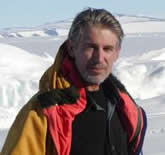 Professor Barrett has spent over four decades studying the Antarctic with a particular interest in its historical evolution over time.
Professor Barrett has spent over four decades studying the Antarctic with a particular interest in its historical evolution over time.
In the 1960’s Professor Barrett spent 5 years at Ohio State University, USA where he completed his doctorate.
He also worked in Antarctica mapping the continent’s mountains and thus became fascinated by the ancient history of the region.
When he returned to New Zealand, he took part in a deep-sea geological drilling expedition of the ocean floor near the Antarctic.
He discovered that core samples obtained from drilling are the key way to trace the past of the Antarctic continent.
Currently Professor Barrett is taking ice-core samples in the Antarctic to better understand the climatic and chemical changes that have occurred in the area over time.
Supreme Master TV:
You’ve been working on several Antarctic drilling projects for the last 30 years or so. Can you tell us how these projects help us to understand Earth’s past and present climate?
Professor Peter Barrett:
The polar regions are particularly sensitive parts of the planet.
Most of the heat comes in from the Sun on the tropics; it gets circulated down to the poles. But changes are greater in the polar regions than they are in the more central part of the Earth, and what the drilling does is to actually get us a history of climate going back in time. Because the Antarctic is mostly covered with ice, we can’t use exposed rocks like you do on other continents; so drilling is so important.
HOST:
Professor Barrett is also investigating the effects of global warming on the Earth’s ice sheets and the subsequent rises in sea-levels.
Dr. Jay Zwally, a leading American climatologist with the National Aeronautics and Space Administration (NASA) in the United States, has stated that the Arctic could be ice-free by the summer of 2012.
Professor Peter Barrett shared with us the possible repercussions of such an event.
Professor Peter Barrett:
There will be quite profound consequences.
But perhaps first it’s important to say that the changes there are taking place faster than predicted.
Our understanding of ten years ago suggested that this melting wouldn’t take place until later this century.
But we are gaining knowledge so quickly now, it’s important to realize that we must stay apace with this knowledge, so that we can make better judgments about the future.
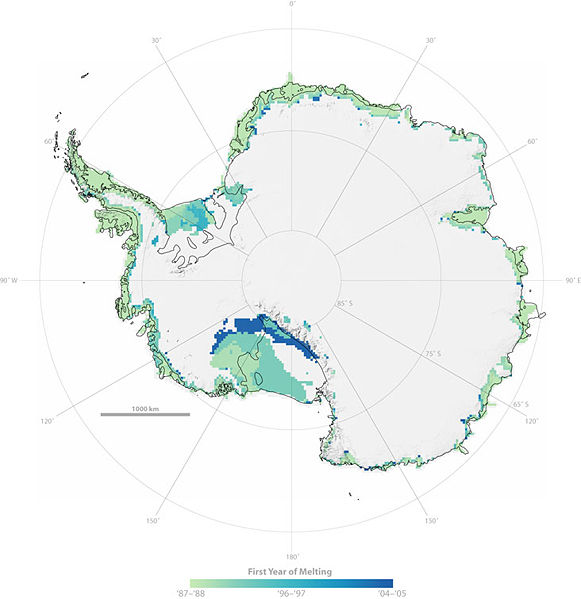
Image showing Antarctic snowmelt in various areas for the first time (Image Credit - Nasa.gov)
HOST:
Although much discussion has occurred regarding the melting of the Greenland ice sheets, the disintegration of the ice at the Antarctic is also a significant marker of global warming.
This precious place contains 90% of the world’s ice and thus holds most of its fresh water reserves.
If the Antarctic were to completely melt, it could potentially cause a 190-foot or 58 meter rise in sea-level.
This figure does not take into account thermal expansion, or the increase in the volume of water when it is heated, which could further raises the height of the ocean.
Professor Peter Barrett:
In the last four years, the scientific reports, not only from the Antarctic, though these are serious, but also from the tropical regions, make it quite clear that it’s human CO2 or greenhouse gas emissions that are causing these changes we’re observing.
And I’m just mindful of the Nobel Peace Prize that was awarded to Al Gore and the Intergovernmental Panel on Climate Change. It was a Peace Prize because of the work that that committee has done to understand and advocate for the management of the climate problem.
HOST:
The Antarctic can be divided into three main areas: the Peninsula, the West Antarctic and the East Antarctic.
In March 2008, a large part of the Wilkins Ice Shelf located in the Peninsula, measuring about 405 square kilometers, separated from the Peninsula.
In January 2009, it was reported that the entire Shelf, which measures more than 14,000 square km, is near total collapse.
Professor Peter Barrett:
In the case of the Wilkins Ice Shelf, this is significant because the Antarctic Peninsula, is warming faster than almost anywhere else on Earth.
The warming rate, it’s like two-and-a-half degrees in the last 50 years; that’s also true of the Arctic and Siberia but most of the rest of the Earth is not that fast.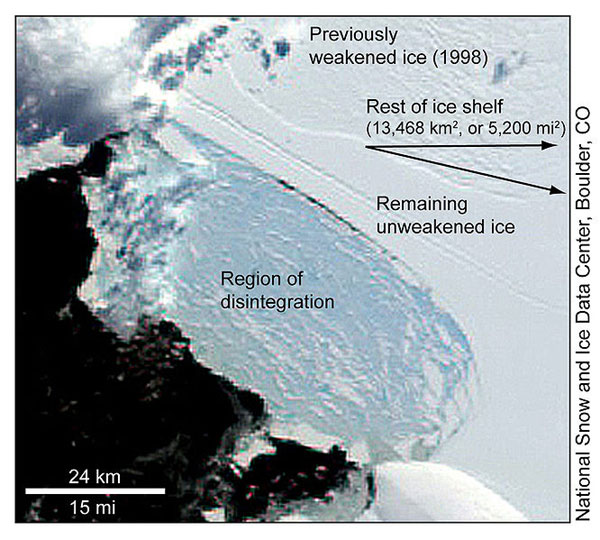
2008 partial collapse of the Wilkins Ice Sheet, showing ice strip holding back further collapse
(Image Credit - the National Snow and Ice Data Center)
And that is now recognized as a response to this warming, which itself is a part of the larger global warming, which we’re now starting to experience.
It represents a warning!
Professor Peter Barrett:
With the knowledge that we now have of Earth’s history and carbon dioxide levels in the past, it’s quite plain that we are moving now into a very dangerous period of climate change.
In our own work in Antarctica, the West Antarctic Ice Sheet collapsed, or simply wasn’t present.
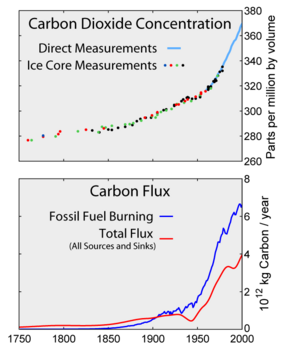
We have good records of this, three- or four-million years ago, at a time when CO2 levels were less than 400 parts per million and we are now approaching that.
Now, this is a situation where we don’t expect that the moment it reaches that point the Antarctic will respond, but what it does mean is that we have, actually, the climate in which that will eventually take place.
First, the sequence is very clear– the ice shelves break out first.
You’ve mentioned the Wilkins Ice Shelf, that’s further north but that’s already happening.
The Ross Ice Shelf is much bigger; it will need a rise in temperature, of four or five degrees. But that could happen within a few decades and then once that goes, that releases the ice in West Antarctica.
So it’s hard to say what’s worse – it actually happening now, or a civilization that lives in the knowledge that it will happen, and that sea level will rise about 10 or 15 meters as a consequence.
HOST:
Welcome back to Planet Earth: Our Loving Home, where we have been speaking with Professor Peter Barrett of the Victoria University of Wellington, in New Zealand on the melting Antarctic ice sheets.
The melting of the polar ice caps is exacerbated by a feedback mechanism known as the “albedo flip,” whereby human-induced global warming heats the atmosphere and ocean, thus melting the ice sheets.
As ice acts like a mirror and reflects some of the sun’s rays back out to space, the increased ice melt allows more of the sun’s energy to enter the ocean, thus further warming the water and causing an increase in the melting of the ice.
This situation is made worse by the subsequent release of methane and other global-warming gases from the Earth’s frozen permafrost.
Professor Barrett explains more about this imminent danger.
Professor Peter Barrett:
There is another risk with methane and that is the fact that billions of tons are stored in a solid form beneath the oceans, and in a warming world these could be released.
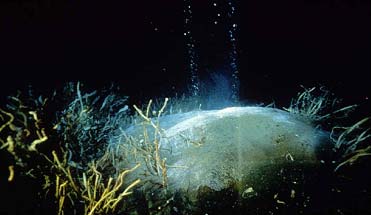 And At the moment in the Arctic, methane is bubbling away; it’s been observed in the last year.
And At the moment in the Arctic, methane is bubbling away; it’s been observed in the last year.
The melting of permafrost releases more methane and nobody knows just when some sort of point will be reached when there will be a cataclysmic dissociation, a discharge of methane.
This is a very good reason to keep global temperatures as low as possible.
HOST:
In such critical times, the world needs sound solutions and immediate actions both at the individual and governmental levels.
Professor Barrett explains.
Professor Peter Barrett:
I just see a very obvious moral obligation.
You can make it more personal by the notion of a personal carbon footprint. In my country, our carbon footprint is about four tons of carbon per year per person. This is large. In countries like India or China it’s much less than one ton; even though the emissions might be large the individual footprint is small.
So because the core problem is carbon dioxide, in particular, it’s a gas that is very long-lived, and so I see it as our responsibility to reduce and eliminate carbon dioxide emissions so that the Earth can have its balance restored.
Supreme Master TV:
What do you see as the important actions that need to be taken from a leadership level?
Professor Peter Barrett:
To me the most important thing is to acknowledge the problem and to advocate ways of dealing with it at every level.
And To me the outstanding example of this is Barack Obama, (he) made a very clear statement and which I would love to be able to quote completely; but to me it was quite a relief and quite inspirational.
He was essentially saying that the science is understood, the problem is great, it can no longer be denied, we must act now.
Supreme Master TV:
And what changes would you encourage on an individual level to reduce climate change?
Professor Peter Barrett:
There are many, and I actually think individual action is just as important as governmental action. and The reason is that I think we personally need to feel both positive and challenged, and to feel that we are making the biggest difference we can.
And so the sort of actions I think in terms of our thinking, to live simply; to think about what we do and to really use as little energy as possible.
HOST:
According to the United Nations Food and Agriculture Organization report entitled “Livestock’s Long Shadow,” the livestock industry is responsible for producing more greenhouse-gas emissions than all the transport in the world combined including cars, planes and ships.
Nobel laureate and chairman of the International Panel on Climate Change, Dr. Rajendra Pachauri has also stated that one of the most effective ways to reduce our carbon footprint is to stop the consumption of meat.
In fact, according to a study by Drs. Gidon Eshel and Pamela Martin, assistant professors of geophysics at the University of Chicago, USA, the carbon footprint of a meat-based diet is 1.5 tons heavier than that of a plant-based diet per person per year.
We asked Professor Barrett for his views on the benefits of a vegetarian diet with regard to climate change.
Professor Peter Barrett:
I can see the benefits of a vegetarian diet very clearly. I have reduced my meat intake quite significantly, and I will continue to do so.
I think a move in that direction, towards a vegetarian diet, is really a very important part of the changes that we need to make.
HOST:
Named Wellingtonian of the Year in 2006, Professor Barrett concluded the interview with some words of encouragement and hope for the planet and its inhabitants.
Professor Peter Barrett:
I think there are quite a few examples around the world, in our history, where there have been positive changes.
I’m quite sure this is what we will get to eventually.
The only question is how much damage do we have to suffer in the process?
This is why urgency is important, the next few years are important.
James Hansen has been outstanding in the way that he makes this clear. His goal of 350 parts per million, I think we must really simply acknowledge and aim for.
Now, we have exceeded that, but the challenge is for a mix of our technology and a changed way of life to reduce CO2 levels down to 350 parts-per-million and try to really get us out of the danger zone.
HOST:
With both the Arctic and Antarctic ice caps melting, urgent action is needed to reduce carbon, methane and other greenhouse gas emissions to restore balance to our beautiful planet.
The simplest and quickest way to stop global warming, that everyone can do easily and immediately, is to adopt a plant-based, vegan diet, which also happens to be exceptionally good for one’s health.
To close our program, we would like to extend our gratitude to Professor Peter Barrett for his wise words and precious time.
For more details on professor Peter Barrett, please visit:
http://www.victoria.ac.nz/antarctic/people/peter-barrett/index.aspx